Indian Practice Studio MOB has completed A House in the Farm, a modern farmhouse with intersecting concrete blocks and sheltered spaces to encourage indoor and outdoor living.
Located in Coimbatore, India, the house was designed to straddle the urban settings and the farmland that flanks it, in a geometric geometric style that aims to offer a modern twist on traditional farmhouse design.
To create a mix of internal and external living spaces, Studio MOB created the house from several concrete block forms, which intersect under expansive concrete roofs with large eaves that provide shelter.
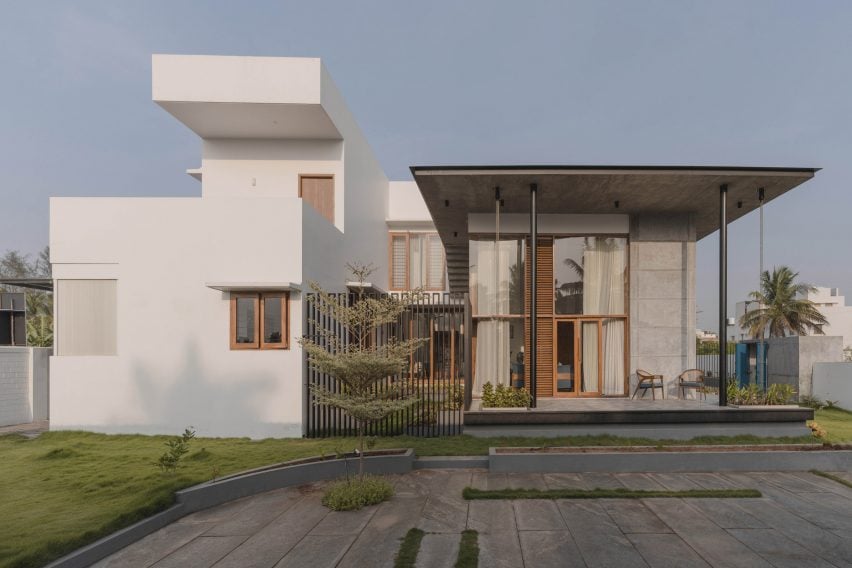
«This home seamlessly combines private havens within a wide, interconnected layout, blending indoor comfort with outdoor tranquility,» studio co-founder Siddhaarth Gowthaman told Dezeen.
Beneath the house’s pitched upper roof, an accent wall clad in brickwork adds to the sense of a wound on the face. Intended to refer to the red soil found in the nearby coconut farm, the accent part of the facade is made up of vertical bricks set at angles.
«The brickwork on the facade was thoughtfully incorporated to bring in an earthy feel and texture due to the red soil found in the coconut farm surrounding the building and also reflecting the city’s colonial history,» continued Gowthaman.
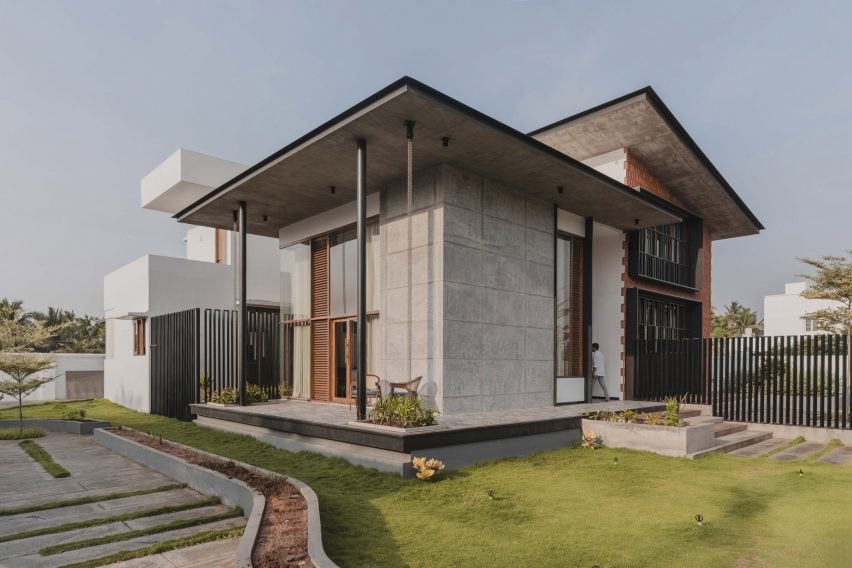
A bright blue gate set within an almost completely enclosed concrete box leads into the House in the front garden of the Farm. Here, a spacious grassy area is defined by concrete landscaping, including raised beds and floor slabs.
On one side, a concrete path gives access to the house, where a shallow staircase with alternating steps made of concrete and wood leads to the front porch.
The front porch is covered with patterned tiles and has a concrete roof overhang. Beyond the porch, a covered path leads to the front door, which is set in a wall of perforated wooden screens.
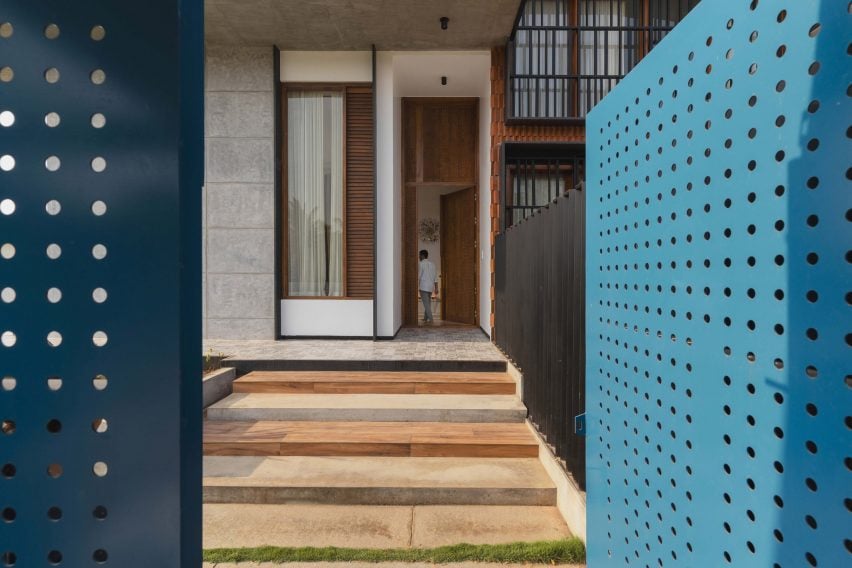
The front entrance leads into a large living room, which has an off-white tiled floor with black square detailing that matches the details on the ceiling directly above.
Other elements in the space include wooden furnishings and blue sofas, as well as an exposed cement wall behind the TV. A large floor-to-ceiling window has been added to one side of the sofa, along with translucent white curtains to soften the natural light in the space.
«Spaces like the kitchen and living room have a seamless connection with the extensive use of glass and huge windows to the surrounding landscape,» said the studio. «Large east-facing windows let in natural light without excessive heat.»
Beyond the living room, a wide corridor connects the rest of the house’s spaces, joining to form a C-shape that wraps around a central planted courtyard.
A kitchen with a white color palette is located on the other side of the courtyard, and two bedrooms are located in the other corners of the plan. One bedroom has a private garden, located at the front of the house and separated from the main front garden by a distinctive black screen.
Flanked by raised concrete planting beds, the private garden features a wooden porch, leading down to a series of shallow concrete steps to a lower deck.
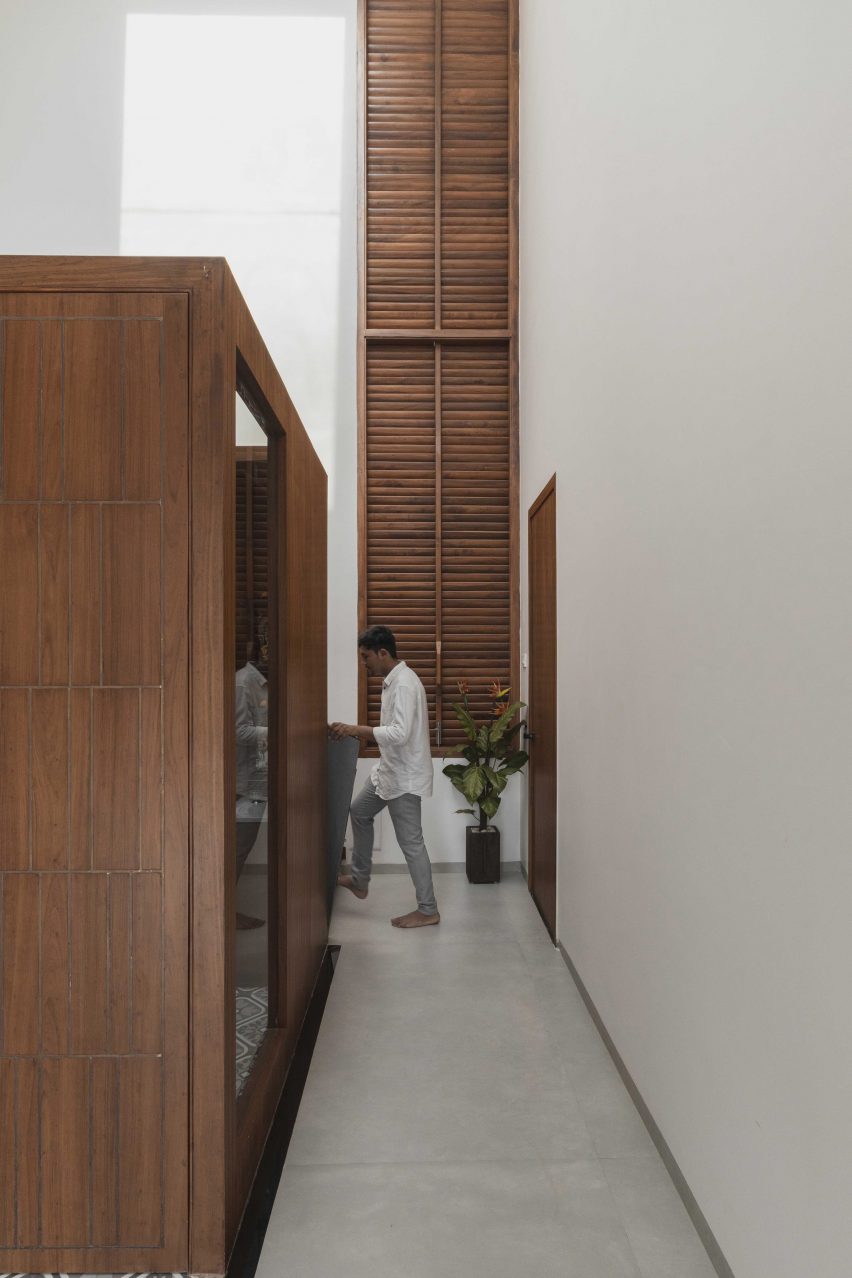
Between the two bedrooms is a central staircase which is lit by a skylight.
«A distinctive staircase, adorned with a skylight and a tall louvered window, represents the space and sacred room of Puja at its heart,» said Gowthaman.
«This architectural wonder not only floods the house with natural light but also facilitates gentle ventilation, creating an atmosphere of serene grace and spiritual tranquility,» said the studio.
Two additional bedrooms and a study are located on the first floor, which opens onto a roof terrace on top of the lower flat roof of the house.
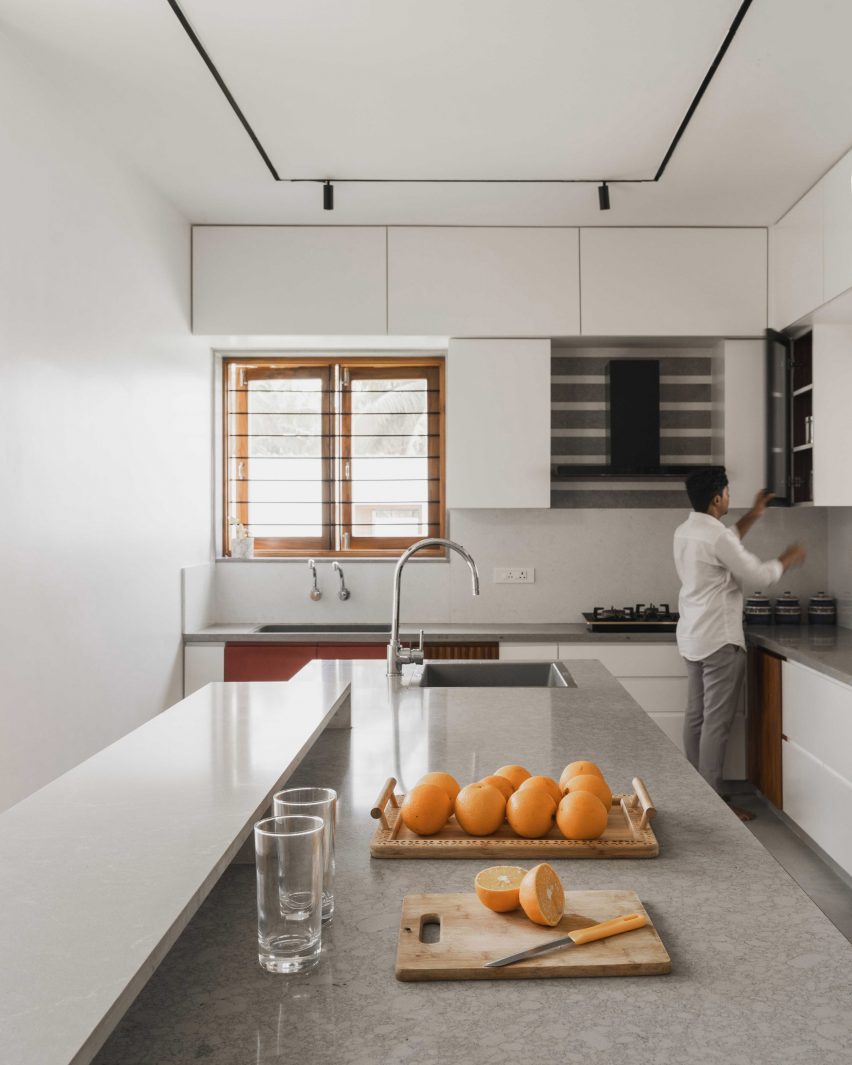
Throughout the house, Studio MOB aimed to integrate elements that serve the different generations, as well as furnishings made from leftover wood.
«Anthropometrically integrated stair railings accommodate residents of all heights, ensuring individual needs are met while maintaining a cohesive aesthetic,» said the studio.
«Sustainable principles are echoed in furniture made from leftover wood, ensuring that every element serves both form and function.»
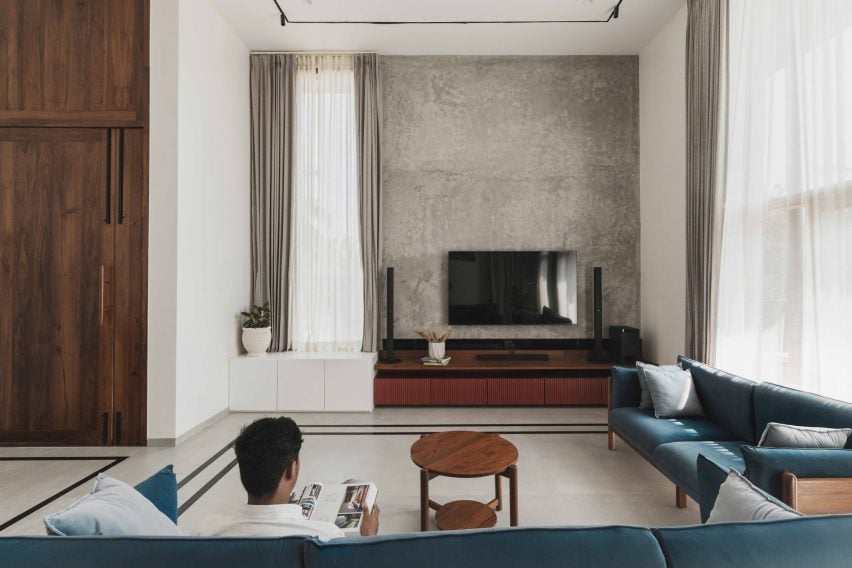
Other Indian houses featured on Dezeen recently include a house made of low-cost materials with a lantern-like roof and a Kerala house with barrel-vaulted roofs and later walls.
Photography is at F/8.
#Expansive #roofs #create #indooroutdoor #spaces #Indian #concrete #house